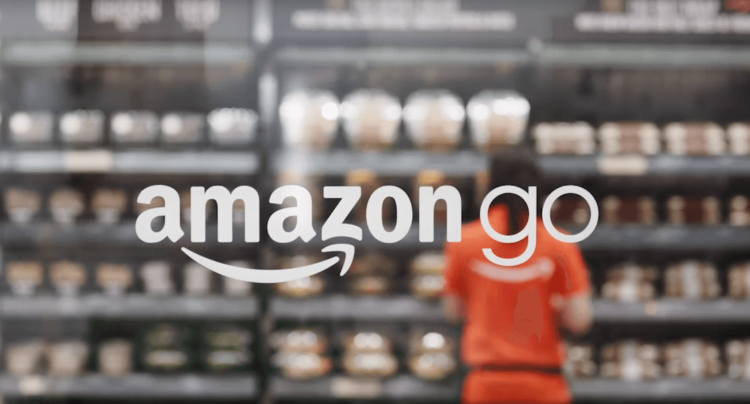Want smarter insights in your inbox? Sign up for our weekly newsletters to get only what matters to enterprise AI, data, and security leaders. Subscribe Now
You could say Amazon Go almost broke tech media’s internet this past December. Driverless shopping, checkout-free shopping, almost “shoplifting,” deep learning, computer vision, and job killer AI were a few phrases that made the rounds. Taking a step back, one does wonder why this is surprising, and how we all missed this entirely. The signs have been there all along.
The online giant realized earlier than anyone else that being the fastest shipping service in the country was a massive value-add for shoppers. Same-day — even same-hour — deliveries became the norm. The site became the go-to destination for product discovery, with greater than half of all product searches starting on Amazon, not Google. With an audience base that loyal and demanding, it became evident that product discovery was never going to stay the “Google way” moving forward.
The company made headlines again a few months back when it announced that it had a warehouse within 20 miles of a whopping 44 percent of the US population. The number, the article noted, had grown from 28 percent (in ‘14) to 36 percent (in ‘15) , and now 44 percent!
Enabled by robots, focused on consumers
Public concern about Amazon’s treatment of its employees hardly kept the company from blazing ahead with building out highly optimized, automated workflows at its fulfillment centers. In June 2016, a Bloomberg article noted, “In 2012 Jeff Bezos scooped up warehouse automation firm Kiva. Everyone else is still trying to catch up.” The company has been steadily scaling its Kiva robot workforce to almost 30,000 today.
AI Scaling Hits Its Limits
Power caps, rising token costs, and inference delays are reshaping enterprise AI. Join our exclusive salon to discover how top teams are:
- Turning energy into a strategic advantage
- Architecting efficient inference for real throughput gains
- Unlocking competitive ROI with sustainable AI systems
Secure your spot to stay ahead: https://bit.ly/4mwGngO
This year, Amazon selected a favorite at its Robotic Picking challenge, scouting for robotic arms that do the best at picking items off the shelf and putting them back on. The pieces have been falling in place systematically for a couple of years. The robotic “store of the future” now seems like a natural progression.
Through all of this, the company has shown immense focus on the consumer experience. It has shown tech and product prowess with Alexa, Dash, and more. The Go story seems like a story of convenience, of time saved. With its entry into the home space, Amazon is certainly cementing itself as the shop of the new American household, extending convenience from the couch all the way to the store.
Trading privacy for convenience
The experience in the storefront will not be without its challenges. Equipped with sensors everywhere (pressure sensors, RFIDs, and more), automatic ID recognition at the entrance, instant sensing of the products taken off the shelf or put back — it’s an activity flow designed around the same principles the company used to design its warehouses, but the moving parts seem aplenty.
Most companies building AI struggle with scale, as AI encounters new situations and objects can fail extensively. The end user experience will determine the nature of these failures, the emotional price a user pays to interact with the technical parts of the store, and the value derived from tradeoffs made. For a successful launch and sustainability of this robotic store model, there is an urgent need for a dogged focus on making things simple, easy, and instantly available to shoppers, at scale.
It’s the same reason technologies like computer vision and facial recognition, which have been struggling to take off for decades now, will find a way to become part of a new habit. Let’s not kid ourselves, much of this store model will be about habit change for shoppers — and we’ll be happy to oblige despite some initial groaning. We will walk into that store knowing our faces are being recognized but do it because it’s Amazon, and we’ll say something like “They know pretty much everything about us anyway.” It is surprising how much privacy we’ve traded off in recent years in return for convenience, a sense of community, or even a fear of missing out (FOMO).
The online-to-offline personalization cycle will be complete with computer vision and a world of sensors these stores will have. We’ll swipe our phones as we walk in like we do at our train stations, take pics of items on the shelves to find similar items online (and unavailable in the store), try on clothes in front of interactive mirrors to check fit, and shop for other stuff designed just for us.
Artificial intelligence, sensing, and automation tech will certainly disrupt the retail industry, change the way we shop, create new consumer habits, and possibly even get us back in the store. Maybe we’ll even see premium stores with luxury brands and AI-led experiences; maybe we’ll see discount stores with the ability to sell and buy seamlessly in the same space The unfolding of the Amazon robotic future is one to closely track. The change is coming at us faster than we can think, making the here and now a great time to indulge in consciously designing and directing this change. The only reality to stick here, it seems, is one whose possibilities are endless.
This article appeared originally at Vue.ai


